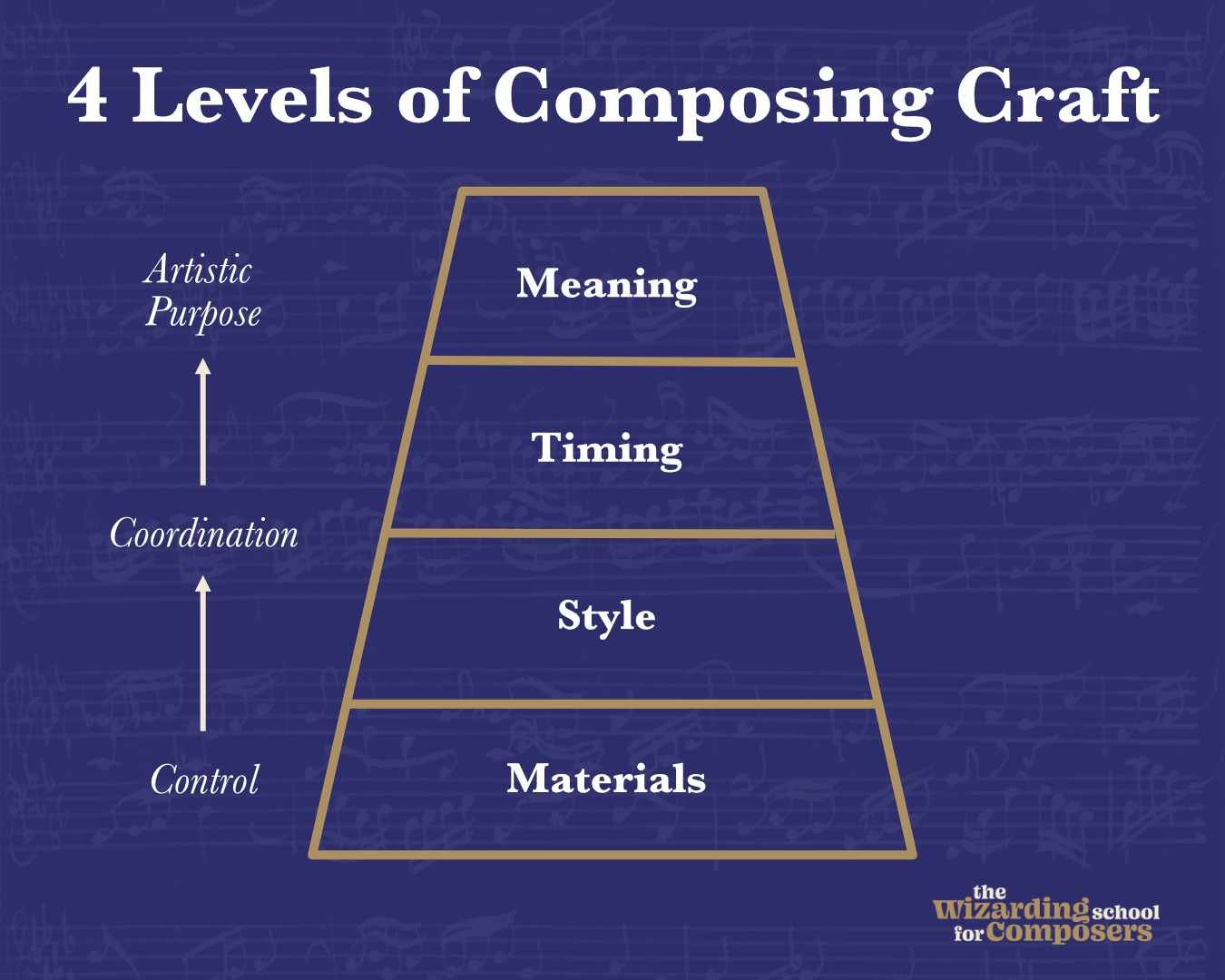The 4 Levels of Composing Craft
The first rule of composing is “learn the craft.”
Besides writing as much music as you can, this starts by learning harmony, counterpoint, orchestration, “20th/21st-century techniques,” etc.
Many excellent college and online courses teach these subjects, but many composers who have taken such courses still find composing stressful.
Why is that? Shouldn’t mastering composing techniques be enough?
Mastering techniques is not enough to compose with ease, because musical materials don’t exist in isolation.
They only work in coordination — and it’s the coordination that trips composers up.
Only a handful of university and online courses teach this coordination systematically. Mostly, it’s something composers learn on an ad hoc basis in composition lessons.
That is, composers generally learn to coordinate musical elements on a case-by-case basis without learning the big-picture principles.
As a result, too many composers end up inheriting “buttstix” about composing — the bad advice students accept from their teachers and peers.
These myths are sometimes innocent and other times genuinely toxic, but they’re always bad for two reasons:
First, because they twist composers into jumping through hoops that don’t apply to their music or artistic vision.
Second, more importantly, because they prevent composers from achieving their full artistic potential.
Analyzing the Four Levels of Craft
The Wizarding School for Composers empowers composers to achieve their full artistic potential by helping them systematically coordinate their compositional craft with their artistic goals.
In the Wizarding School, composers learn how to coordinate their craft on four levels:
How do these levels work? Let’s break it down . . .
1. Materials
“Materials” refers to what’s taught in most online courses and the common undergraduate theory core.
At this level of craft, you understand and can use the building blocks of melody, harmony, arranging, sound design, beat making, etc.
2. Style
“Style” is the first level of coordinating your materials. At this level, you select specific materials to fit a genre or create a unique “sound.”
Many composers erroneously believe that “style” is what makes music magical. Although it’s true that having a unique sound can be the “hook” that catches a listener’s attention, true musical magic only happens on the next level of coordination . . .
3. Timing
“Timing” is what music cognition researchers have shown causes all the magical audience reactions, such giving goosebumps, riveting people to their seats, getting stuck in their head, etc.
Instead of coordinating materials to create a general sound, timing coordinates materials to create predictability, tension, and surprise.
Although your style may initially “hook” a listener, without effective timing, your listeners will get bored and tune out.
4. Meaning
“Meaning” is the highest level of musical coordination. It uses style and timing to achieve specific artistic or expressive goals.
This is the level of craft on which professional composers operate and through which they become successful in their niches.
This is also the level where craft comes full circle: past a baseline of basic technical competence, composers cannot continue to grow their technique effectively if they are not clear on their audience and expressive goals.
Want to Learn More?
Hopefully, this post has given a little more context to how you can hone your craft.
If you want to learn more about these four levels of composing craft, check out some of these other posts:


